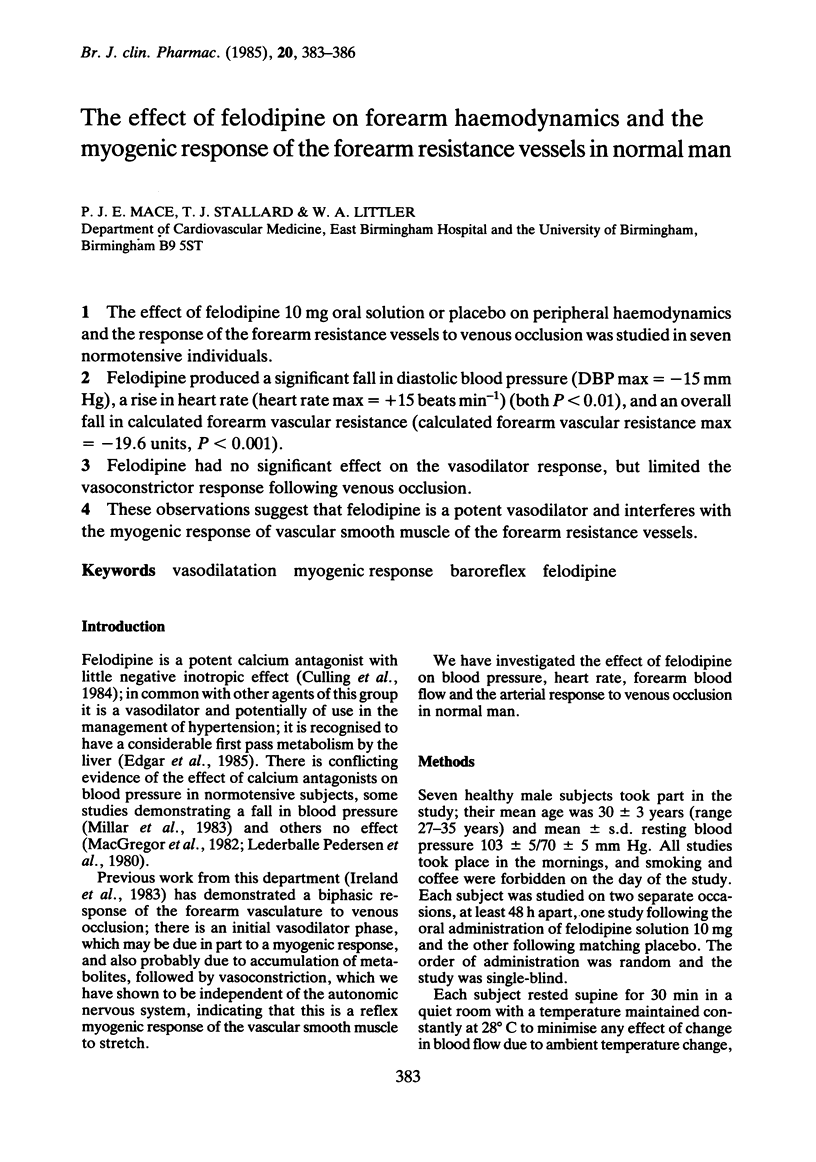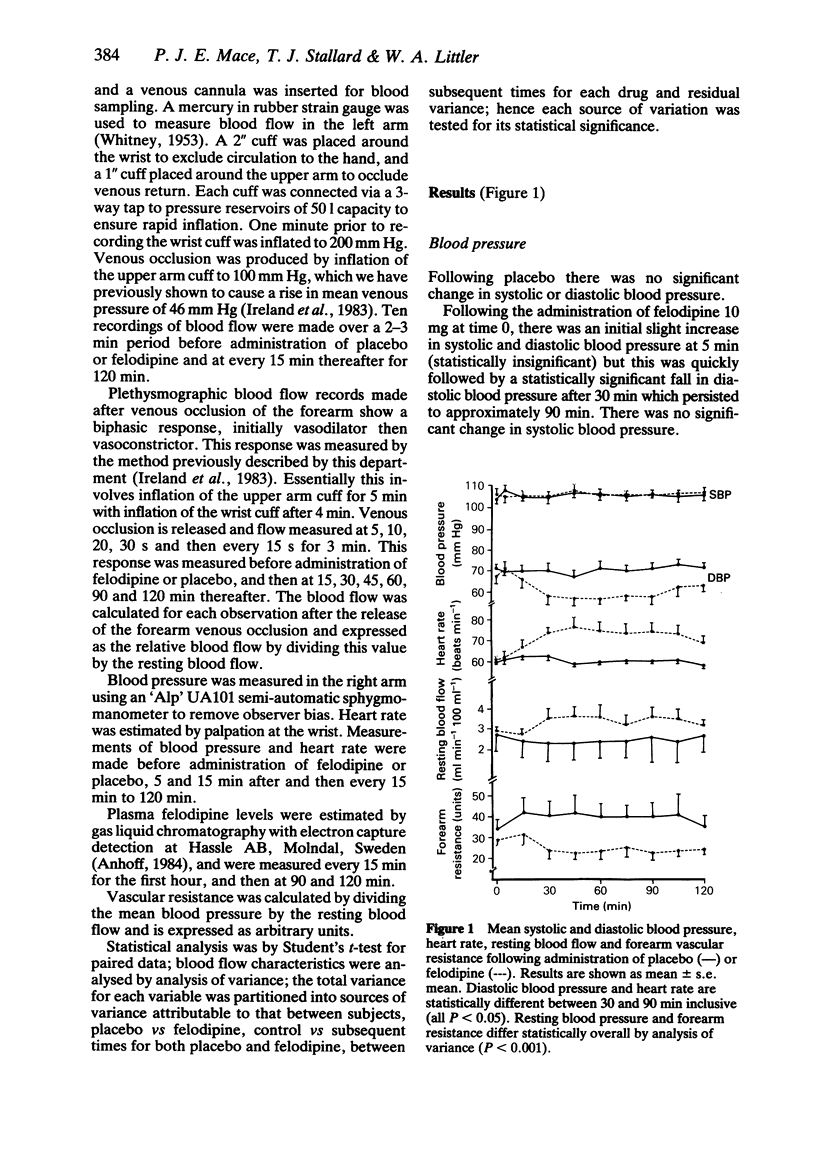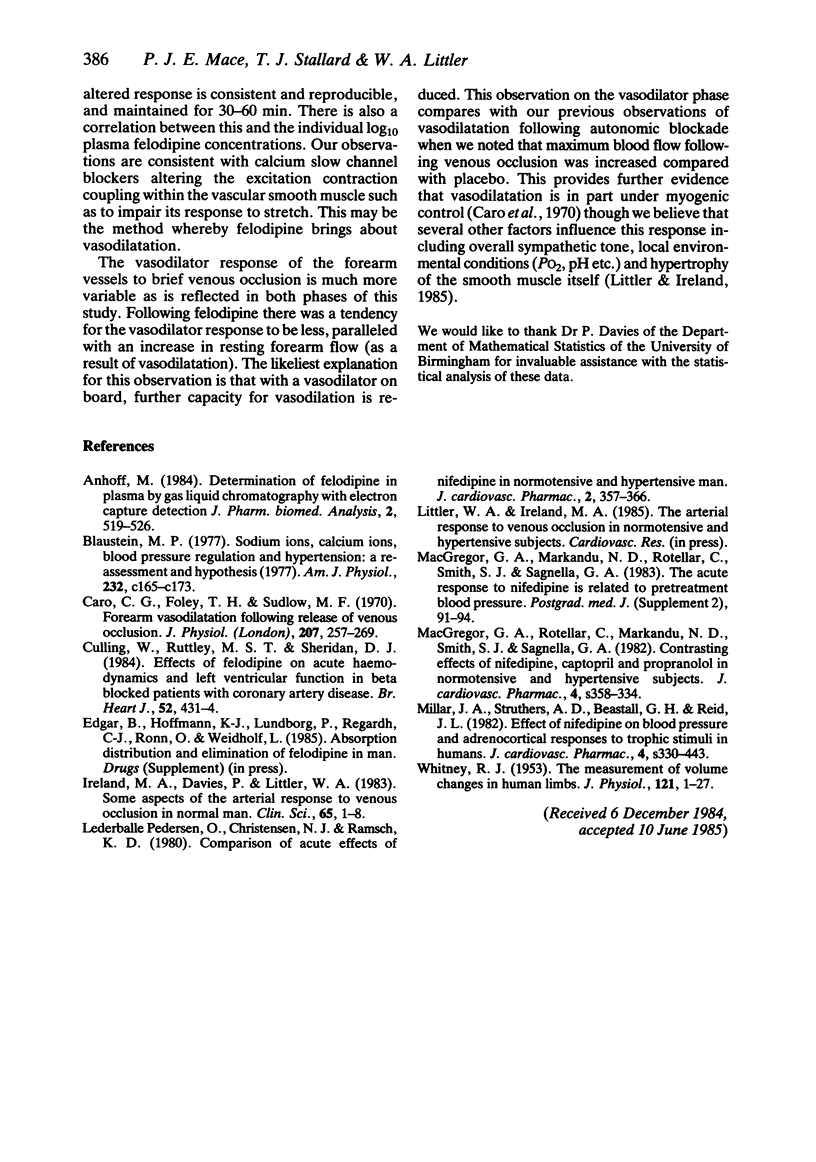Abstract
The effect of felodipine 10 mg oral solution or placebo on peripheral haemodynamics and the response of the forearm resistance vessels to venous occlusion was studied in seven normotensive individuals. Felodipine produced a significant fall in diastolic blood pressure (DBP max = -15 mm Hg), a rise in heart rate (heart rate max = +15 beats min-1) (both P less than 0.01), and an overall fall in calculated forearm vascular resistance (calculated forearm vascular resistance max = -19.6 units, P less than 0.001). Felodipine had no significant effect on the vasodilator response, but limited the vasoconstrictor response following venous occlusion. These observations suggest that felodipine is a potent vasodilator and interferes with the myogenic response of vascular smooth muscle of the forearm resistance vessels.
Full text
PDF



Selected References
These references are in PubMed. This may not be the complete list of references from this article.
- Blaustein M. P. Sodium ions, calcium ions, blood pressure regulation, and hypertension: a reassessment and a hypothesis. Am J Physiol. 1977 May;232(5):C165–C173. doi: 10.1152/ajpcell.1977.232.5.C165. [DOI] [PubMed] [Google Scholar]
- Caro C. G., Foley T. H., Sudlow M. F. Forearm vasodilatation following release of venous congestion. J Physiol. 1970 Apr;207(2):257–269. doi: 10.1113/jphysiol.1970.sp009059. [DOI] [PMC free article] [PubMed] [Google Scholar]
- Culling W., Ruttley M. S., Sheridan D. J. Acute haemodynamic effects of felodipine during beta blockade in patients with coronary artery disease. Br Heart J. 1984 Oct;52(4):431–434. doi: 10.1136/hrt.52.4.431. [DOI] [PMC free article] [PubMed] [Google Scholar]
- Ireland M. A., Davies P., Littler W. A. Some aspects of the arterial response to venous occlusion in man. Clin Sci (Lond) 1983 Jul;65(1):1–8. doi: 10.1042/cs0650001. [DOI] [PubMed] [Google Scholar]
- Lederballe Pedersen O., Christensen N. J., Rämsch K. D. Comparison of acute effects of nifedipine in normotensive and hypertensive man. J Cardiovasc Pharmacol. 1980 Jul-Aug;2(4):357–366. doi: 10.1097/00005344-198007000-00003. [DOI] [PubMed] [Google Scholar]
- MacGregor G. A., Markandu N. D., Rotellar C., Smith S. J., Sagnella G. A. The acute response to nifedipine is related to pre-treatment blood pressure. Postgrad Med J. 1983;59 (Suppl 2):91–94. [PubMed] [Google Scholar]
- MacGregor G. A., Rotellar C., Markandu N. D., Smith S. J., Sagnella G. A. Contrasting effects of nifedipine, captopril, and propranolol in normotensive and hypertensive subjects. J Cardiovasc Pharmacol. 1982;4 (Suppl 3):S358–S362. [PubMed] [Google Scholar]
- Millar J. A., Struthers A. D., Beastall G. H., Reid J. L. Effect of nifedipine on blood pressure and adrenocortical responses to trophic stimuli in humans. J Cardiovasc Pharmacol. 1982;4 (Suppl 3):S330–S334. [PubMed] [Google Scholar]
- WHITNEY R. J. The measurement of volume changes in human limbs. J Physiol. 1953 Jul;121(1):1–27. doi: 10.1113/jphysiol.1953.sp004926. [DOI] [PMC free article] [PubMed] [Google Scholar]


